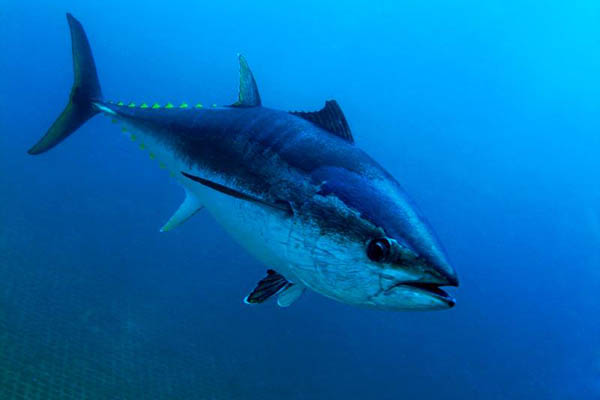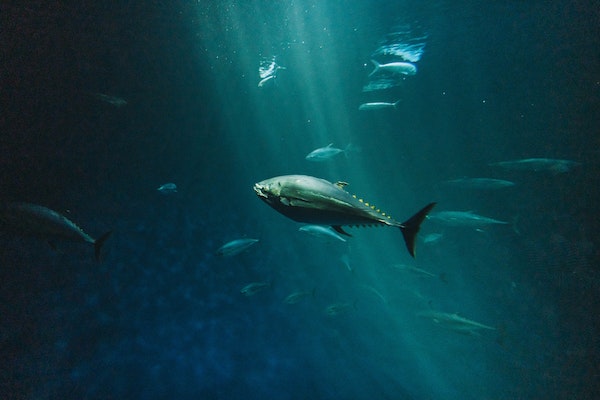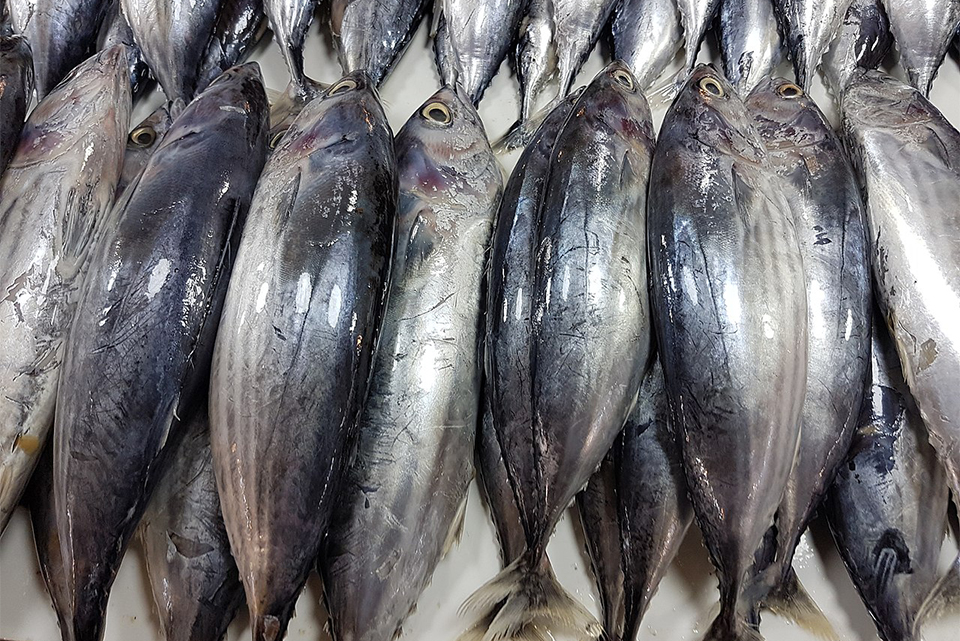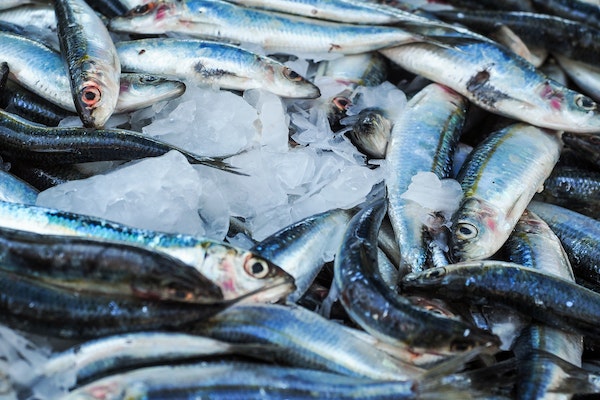Study uncovers unexpected genetic links across Atlantic bluefin tuna spawning grounds, with implications for fisheries management

A new study has found that Atlantic bluefin tuna from the three known spawning grounds are more genetically interconnected than previously thought.
The study, published in Molecular Ecology, was led by Spain-based AZTI Technology Centre and involved a team of researchers from eight countries – including three NOAA Fisheries scientists. This is the first genetic analysis of Atlantic bluefin tuna to include all known spawning grounds, with the challenge of determining the origin of individuals spawning in the northeastern United States and updating information on fish stocks.
“For all these years, we have assumed that bluefin tuna, despite their ability to make large migrations within the Atlantic Ocean, remain loyal to spawning at the same area where they were born,” said Natalia Díaz-Arce, a fisheries genetics researcher at AZTI. “However, spawning activity has recently been detected in an area off the northeastern coast of the United States that had not been included in previous genetic studies and whose origin was unknown.”
Conservation efforts are helping to protect valuable bluefin tuna, but more information on their biology is needed to create effective fisheries management plans that can adapt to population and distribution changes.
This study showed that tuna from the Mediterranean and the Gulf of Mexico use the spawning area off the northeast coast of the United States. In addition, for the first time, adults of Mediterranean origin were observed spawning in the Gulf of Mexico. The research also identified traces of the albacore tuna genome in the genome of Mediterranean bluefin tuna, suggesting an ancient hybridization between the two species.
“Just as humans have a small percentage of Neanderthal DNA, the Mediterranean bluefin tuna also carries in its genome a genetic footprint of a closely related species, the albacore tuna,” explained Díaz-Arce.
The individuals from the third spawning area analyzed by the AZTI team show intermediate genetic characteristics and also carry these traces of albacore tuna.
“These findings show that what were thought to be two reproductively isolated populations (those that spawn in the Mediterranean and the Gulf of Mexico, respectively), although they tend to return to the area where they were born, are not only demographically connected, but they also mix in the spawning ground at the northeastern United States,” she said.
The study revealed that bluefin tuna populations, thought to be reproductively isolated in the Mediterranean and the Gulf of Mexico, are not only connected but also mix in the spawning ground off the northeastern United States.
The findings have important implications for developing strategies to manage fisheries, ensuring both the sustainable exploitation and conservation of bluefin tuna. In addition, the discovery of the connectivity of the Mediterranean with the other two spawning areas could have future implications, such as the genetic homogenization of all bluefin tuna worldwide and an impact on the resilience of bluefin tuna to environmental changes.
The project, scheduled for completion in 2023, received funding from the Basque Government and support from the International Commission for the Conservation of Atlantic Tunas (ICCAT).
Now that you've reached the end of the article ...
… please consider supporting GSA’s mission to advance responsible seafood practices through education, advocacy and third-party assurances. The Advocate aims to document the evolution of responsible seafood practices and share the expansive knowledge of our vast network of contributors.
By becoming a Global Seafood Alliance member, you’re ensuring that all of the pre-competitive work we do through member benefits, resources and events can continue. Individual membership costs just $50 a year.
Not a GSA member? Join us.
Author
-
Responsible Seafood Advocate
[103,114,111,46,100,111,111,102,97,101,115,108,97,98,111,108,103,64,114,111,116,105,100,101]
Tagged With
Related Posts

Fisheries
ICCAT adopts modernized fisheries management plan for Atlantic bluefin tuna
Regional fishery management organization adopts modernized fisheries management plan for Atlantic bluefin tuna that could help replenish fish stocks.

Fisheries
How aging uncertainty of major tuna species impacts the estimation of growth functions
Aging error and age range influences the uncertainty of growth estimation in major tuna species, necessitating improved accuracy of age analysis.

Fisheries
EU agrees on shared fisheries management of key stocks in 2024
The EU reached an agreement with northeast Atlantic coastal states, UK and Norway on the shared fisheries management of key stocks in 2024.

Fisheries
Fisheries in Focus: What is the Fisheries Management Index and what does it say about U.S. fisheries?
To properly evaluate a fishery management system, we need a measure of the management regime as a whole: Enter the Fisheries Management Index (FMI).



